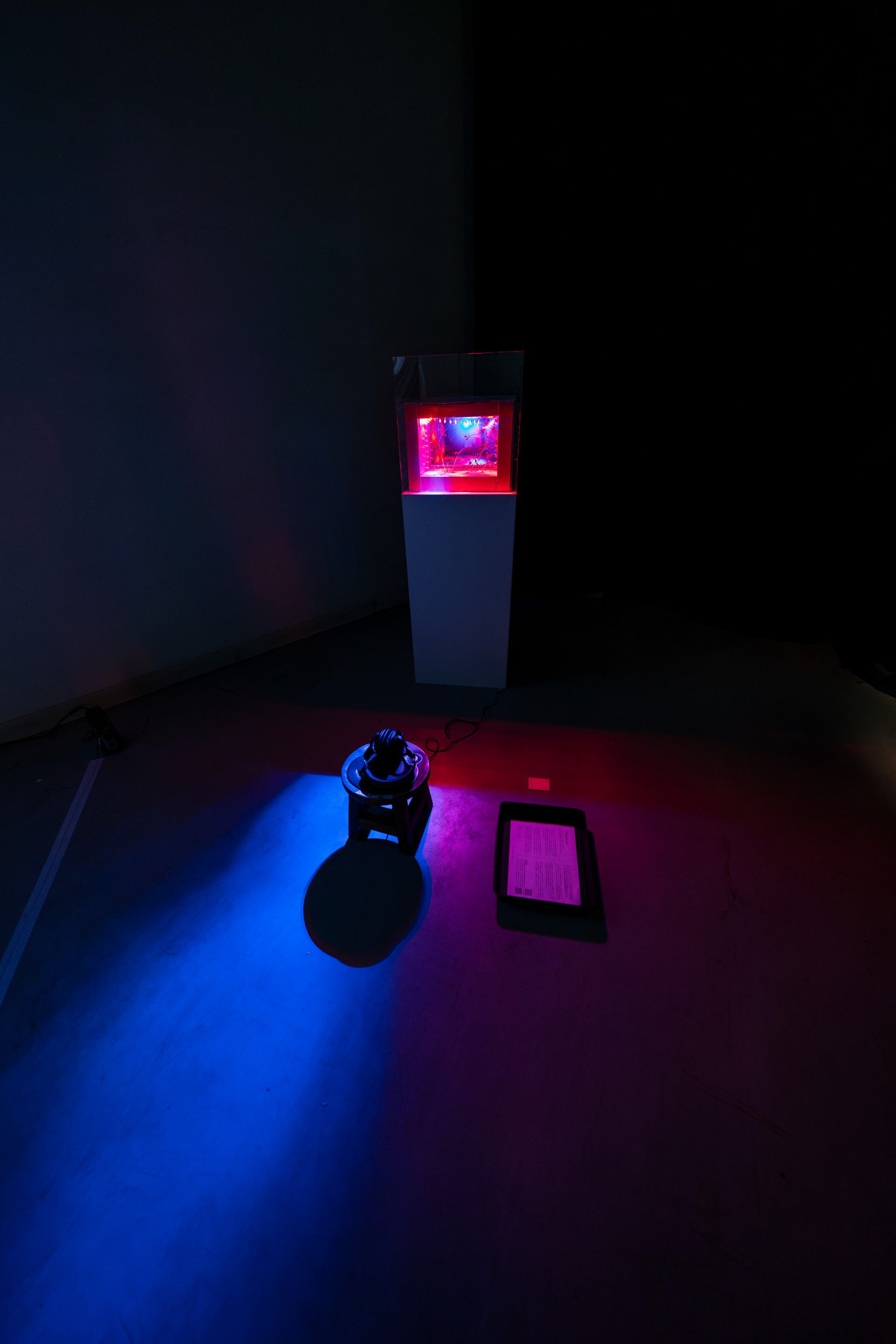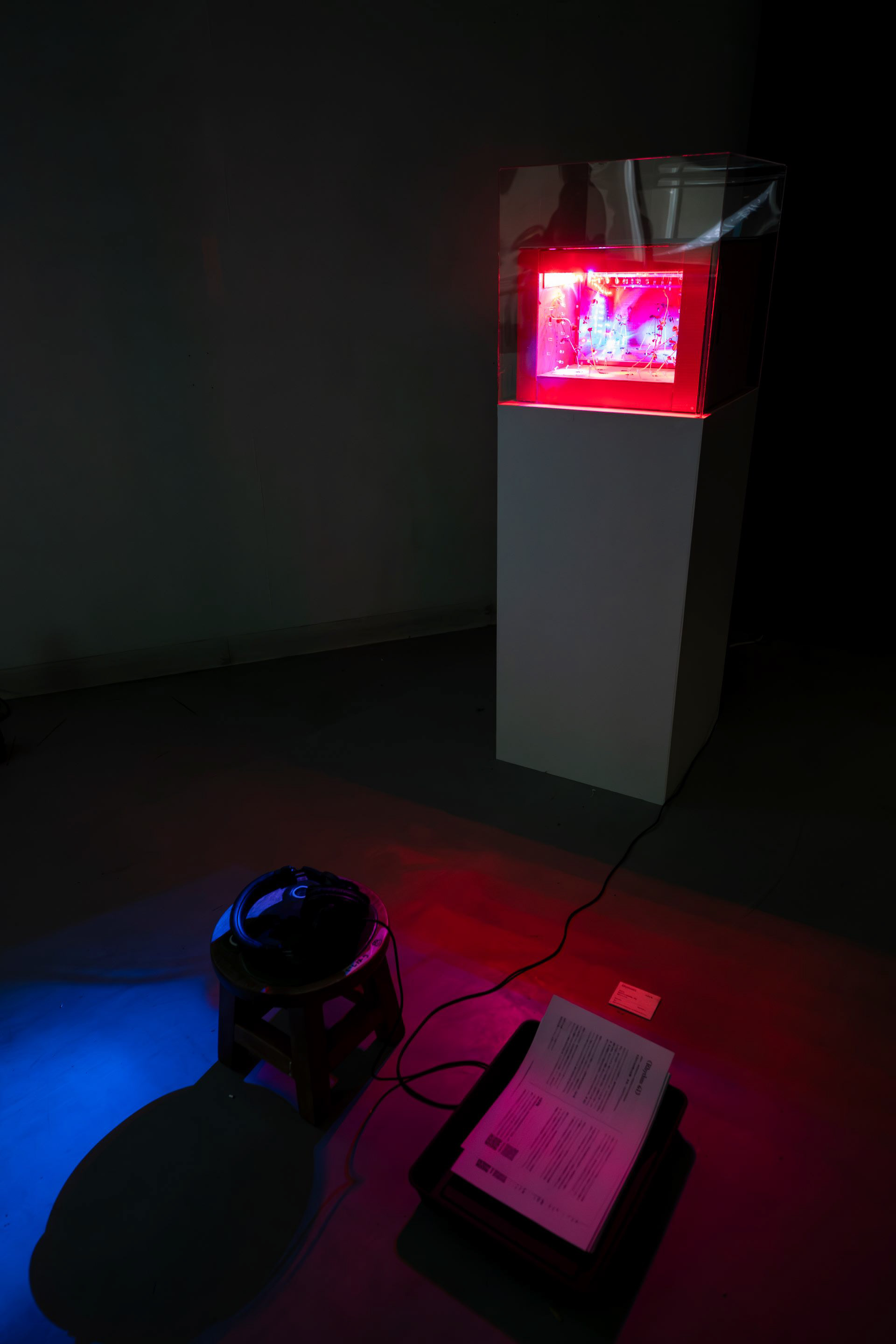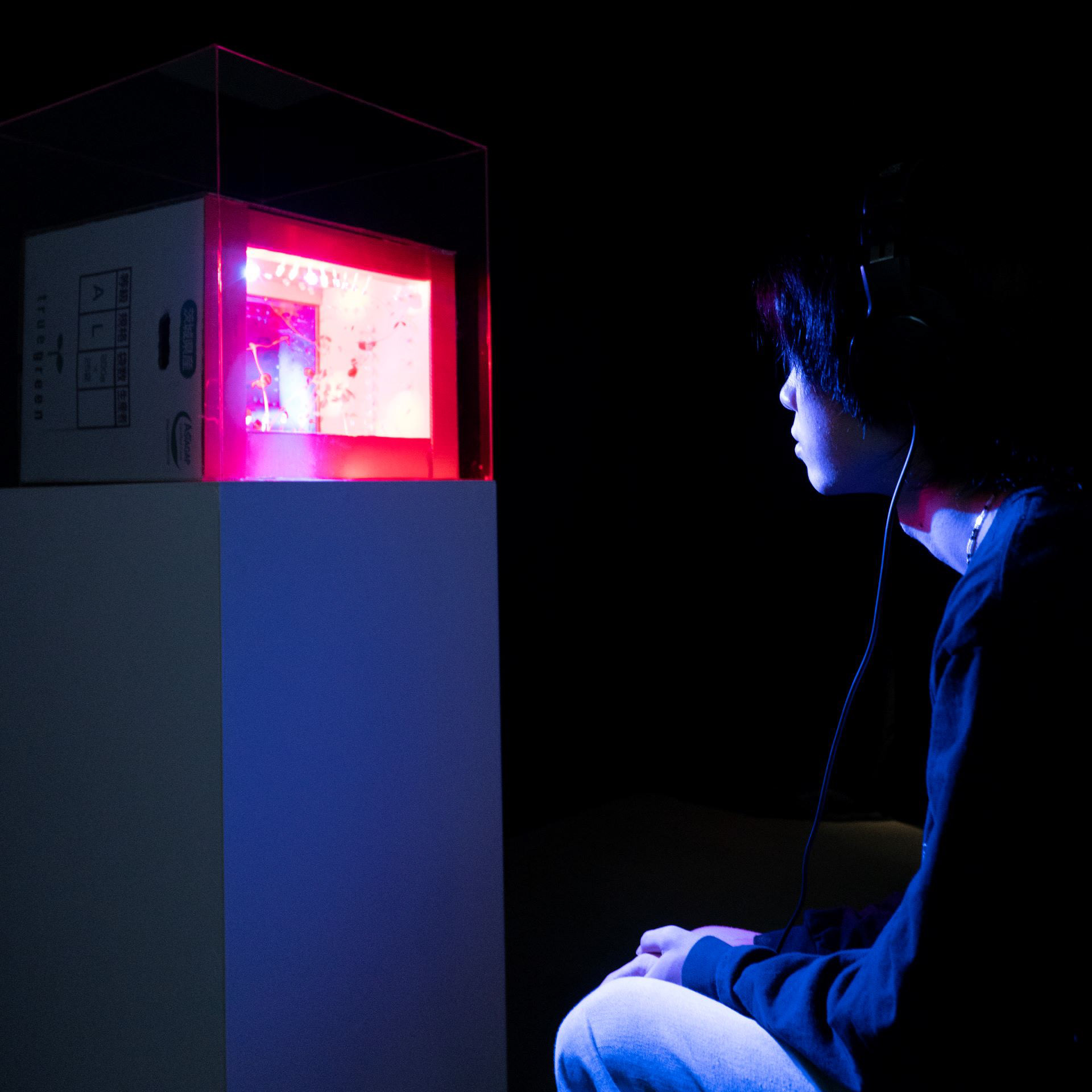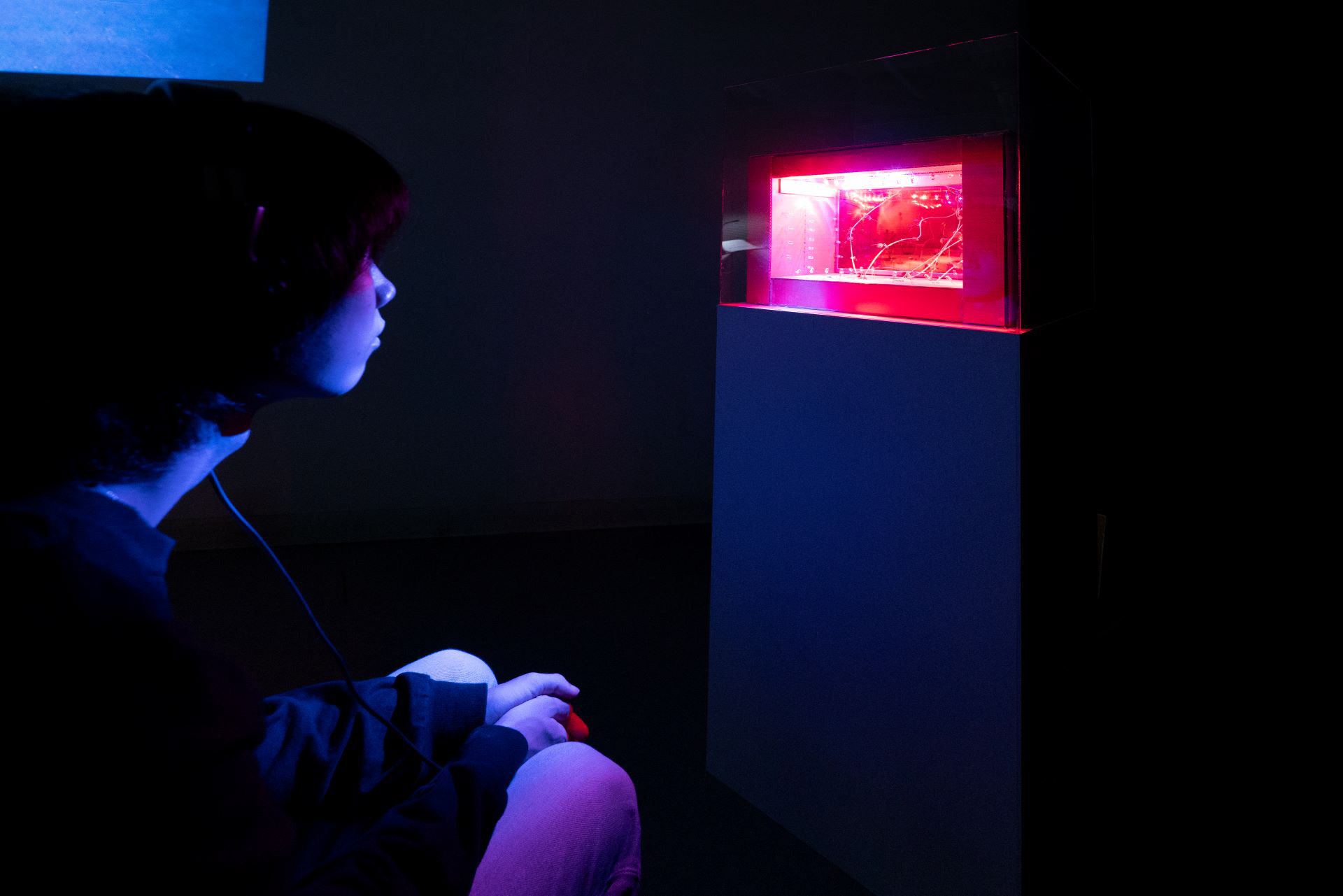《Rhythm 61》
2024.9|400(W)mm×350(D)mm×300(H)mm
豆苗のための舞台装置、豆苗、UHDヴィデオ(2min15sec)
2024.9|400(W)mm×350(D)mm×300(H)mm
豆苗のための舞台装置、豆苗、UHDヴィデオ(2min15sec)
この小さなステージのような装置では、植物の成長率が最も高い色である青色と赤色のライトで豆苗を育てることができます。更に、光に向かって伸びる性質を利用し、様々な角度・タイミングで光を点灯させることで豆苗に動いてもらうことが可能になっています。舞台上に7個の種子を蒔き、2週間かけて育て、その過程を終始、定点カメラで撮影し続けました。さらに、豆苗が十分に育ってきた頃、葉に電極を付けて電気信号を計測し、その信号から音楽を生成し、舞い踊る彼らのためにBGMにしました。
装置のバックスクリーンは「過去」を表し、2週間の間の豆苗の動き、豆苗の電気信号から生成された音楽など、豆苗によるアクションで構成されます。
そして、「現在」はステージ上で育ち続ける豆苗そのものです。私達はそのままでは豆苗の動きを捉えることができませんが、確かに眼の前で育ち続けています。
そして、「現在」はステージ上で育ち続ける豆苗そのものです。私達はそのままでは豆苗の動きを捉えることができませんが、確かに眼の前で育ち続けています。
流通している豆苗は、個体それぞれ曲がって育たないように光がコントロールされた工場で育てられ、豆苗は通常約2週間で出荷されます。「出荷されるまで」の期間の2週間で豆苗に思う存分動き回ってもらった記録。そして、本来ならば見ることのない2週間を過ぎた豆苗の姿、その2つが本作品中で交差しているのです。
豆苗は今も踊っています、豆苗のリズムで
豆苗は今も歌っています、豆苗のリズムで
豆苗は今も歌っています、豆苗のリズムで
《Rhythm61》
2024.9 |400(W)mm×350(D)mm×300(H)mm
stage set for pea sprouts, pea sprouts, UHDvideo(2min15sec)
This small stage setup lets pea sprouts grow under blue and red lights, which are the best colors for plant growth. By using their natural tendency to grow towards light, I can make the sprouts move by adjusting the light angles and timings. I planted seven seeds on the stage and let them grow for two weeks, filming the whole process with a fixed camera. Once the sprouts were big enough, I attached electrodes to their leaves to measure their electrical signals and turned those signals into music, creating a background music for their dance.
The back screen of the device represents the “past,” showing the sprouts’ movements over the two weeks and the music generated from their electrical signals. The “present” is the sprouts themselves, growing on stage. While we can’t see their movements directly, they are definitely growing right in front of us.
Commercially grown pea sprouts are usually grown in factories with controlled lighting to ensure they grow straight, and they are typically shipped after about two weeks.This work records the pea sprouts moving freely during the two weeks “before shipping.” The two aspects—pea sprouts’ movements during the two weeks and their appearance after the two weeks, which we would not normally see—intersect in this work.
The pea sprouts are dancing all the time, in a rhythm we can't see
The pea sprouts are singing all the time, in a rhythm we can't hear
2024.9 |400(W)mm×350(D)mm×300(H)mm
stage set for pea sprouts, pea sprouts, UHDvideo(2min15sec)
This small stage setup lets pea sprouts grow under blue and red lights, which are the best colors for plant growth. By using their natural tendency to grow towards light, I can make the sprouts move by adjusting the light angles and timings. I planted seven seeds on the stage and let them grow for two weeks, filming the whole process with a fixed camera. Once the sprouts were big enough, I attached electrodes to their leaves to measure their electrical signals and turned those signals into music, creating a background music for their dance.
The back screen of the device represents the “past,” showing the sprouts’ movements over the two weeks and the music generated from their electrical signals. The “present” is the sprouts themselves, growing on stage. While we can’t see their movements directly, they are definitely growing right in front of us.
Commercially grown pea sprouts are usually grown in factories with controlled lighting to ensure they grow straight, and they are typically shipped after about two weeks.This work records the pea sprouts moving freely during the two weeks “before shipping.” The two aspects—pea sprouts’ movements during the two weeks and their appearance after the two weeks, which we would not normally see—intersect in this work.
The pea sprouts are dancing all the time, in a rhythm we can't see
The pea sprouts are singing all the time, in a rhythm we can't hear



